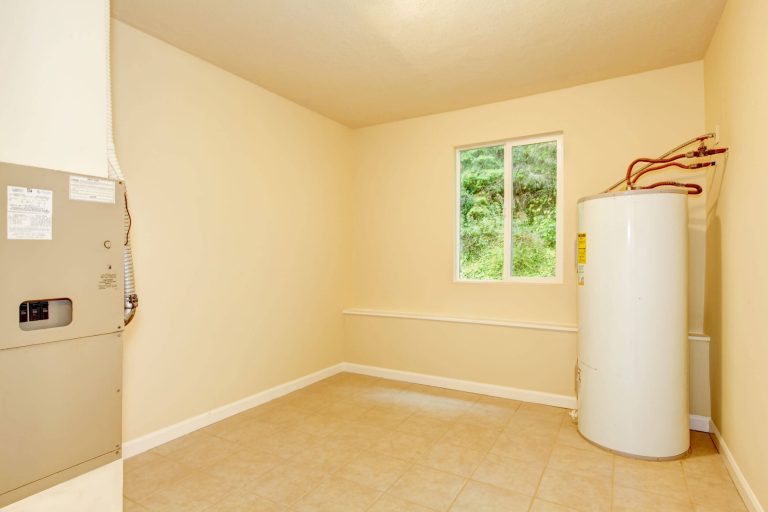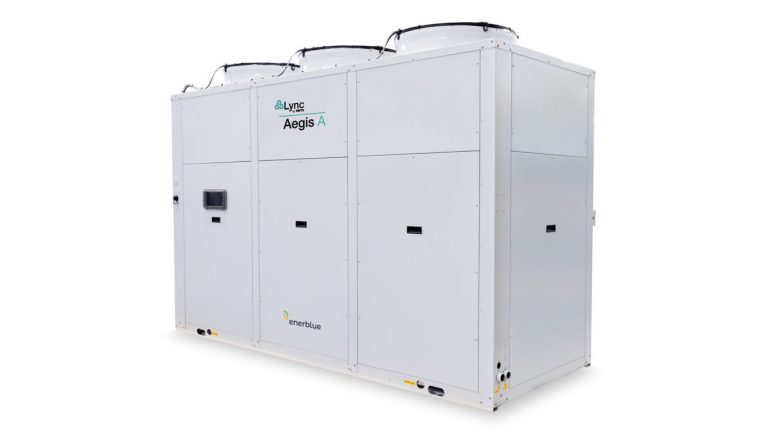CO2 Heat Pump Water Heaters Vs. Resistive Hot Water Heaters
Resistive hot water heaters—those that use submerged heating elements to heat water stored in a tank—are currently the most common type of water heater in use in the U.S. This is in large part because they have the cheapest up-front cost. Heat pump water heaters –and particularly the newer CO2 units—offer an alternative for companies looking to simultaneously reduce lifetime costs and accomplish important decarbonization and environmental protection goals.
How Resistive Water Heaters Work
 Resistive water heaters have electric heating elements submerged in an insulated, glass-lined steel tank. The elements are turned on when the water temperature drops below a setpoint on a thermostat. Cold water enters through a tube at the bottom of the tank, is heated, and hot water is pulled out the top when there is a demand for hot water (when someone turns on a tap). Ranging in size from 20 to 80 gallons or more, resistive water heaters can be fueled by electricity, natural gas, propane or oil. Of these, electric hot water tanks are among the least expensive options in terms of upfront cost, but they are not the most energy efficient, inexpensive or environmentally friendly to operate.
Resistive water heaters have electric heating elements submerged in an insulated, glass-lined steel tank. The elements are turned on when the water temperature drops below a setpoint on a thermostat. Cold water enters through a tube at the bottom of the tank, is heated, and hot water is pulled out the top when there is a demand for hot water (when someone turns on a tap). Ranging in size from 20 to 80 gallons or more, resistive water heaters can be fueled by electricity, natural gas, propane or oil. Of these, electric hot water tanks are among the least expensive options in terms of upfront cost, but they are not the most energy efficient, inexpensive or environmentally friendly to operate.
How Heat Pump Water Heaters Work
 Heat pump hot water heaters are high-efficiency, environmentally friendly hot water systems. While these systems also have storage tanks (usually 50, 65 or 80 gallons), they use a more efficient technology to heat the stored water. Rather than generating heat directly using heating elements, they simply move heat. As such, they consume two to three times less energy than a resistive electric hot water heater. Heat from surrounding air or a nearby water source is pulled into the pump and its heat is absorbed by a refrigerant; the cool air or water is then exhausted. The refrigerant is pumped through a compressor, increasing its temperature. At the same time, cool water from the tank is circulated to the top and draws heat from the heated refrigerant inside the condenser coil.
Heat pump hot water heaters are high-efficiency, environmentally friendly hot water systems. While these systems also have storage tanks (usually 50, 65 or 80 gallons), they use a more efficient technology to heat the stored water. Rather than generating heat directly using heating elements, they simply move heat. As such, they consume two to three times less energy than a resistive electric hot water heater. Heat from surrounding air or a nearby water source is pulled into the pump and its heat is absorbed by a refrigerant; the cool air or water is then exhausted. The refrigerant is pumped through a compressor, increasing its temperature. At the same time, cool water from the tank is circulated to the top and draws heat from the heated refrigerant inside the condenser coil.
Energy Efficiency Differences
In most parts of the country, electricity costs more per unit of delivered heat than gas or other fossil fuels, often making electric resistance the most expensive way to heat water. Electric resistance elements provide less than half the hot water per unit of energy than heat pumps.
In both electric resistance and heat pump hot water heaters, a portion of the stored energy is lost through the walls of the storage tank and in the pipes over time (referred to as standby heat losses). Without proper insulation, standby losses through the pipes can be significant. However, the process of heating water to the desired temperature after any amount of standby loss is much more efficient in a heat pump unit, as it simply moves heat around to do so.
A water heater’s energy factor (EF) indicates its overall energy efficiency based on the amount of hot water produced per unit of fuel consumed over a typical day. The factoring of a heater’s EF takes into account standby losses as well as cycling losses (loss of heat as the water in the tank circulates through the tank and inlet or outlet) and recovery efficiency. Most new water heaters have an EF ranging from .58 to .60. The EF of a heat pump water heater is significantly higher, at 2.0.
In terms of Coefficient of Performance (COP), the ratio of the heat pump’s BTU heat output to the BTU electrical input, resistive water heaters have a COP of 1.0. Heat pump water heaters use no more than half the electricity compared to a resistive electrical water heater and typically much less, with a high COP of 3.0 – 5.0 on average year-round.
Additionally, CO2 heat pumps often have a lifetime total cost of ownership (TCO) close to that of natural gas units.
Because they cost a lot to use, electric-resistance water heaters are a good choice only if you don’t use much hot water, if electric rates are low, or if there is no other option.
Sustainability
Until recently, the most common refrigerants used in heat pump water heaters were R134a and R410a. However, heat pumps using R744, commonly referred to as refrigerant grade CO2, have been introduced. CO2 is non-toxic, non-flammable, has an Ozone Depletion Potential (ODP) of zero, and a low Global Warming Potential (GWP) of one. That’s compared to other refrigerants, such as R134a and R410a, which have GWP of 1,430 and 2,088, respectively. CO2 is a more sustainable, environmentally friendly material in this application.
Cold-weather Advantage
New heat pump technology using CO2 makes it possible to use electric heat pumps in below-zero temperatures. CO2 heat pumps can produce hot water up to 185° with outdoor air temperatures as low as -4°F (air source units), or with source water temperatures as low as +14°F (water source units) with no need for supplemental heat. This makes these heat pump water heaters highly efficient for optimal energy savings and lower operating costs in a variety of new and retrofit commercial facilities.
Better All-Around Results
Ultimately, CO2 heat pump hot water heaters make it possible for companies to achieve sustainability/carbon-neutrality goals while gaining energy savings in hot water production, even in colder climates.
Upgrade Your Water Heater Today
R.P. Fedder is now offering the Lync Aegis CO2 heat pump hot water. It is a 1st of its kind product in North America and efficiently produces hot water up to 185°F at air temperatures as low as -4°F with no need for supplemental heat. For more information, check out the product page.